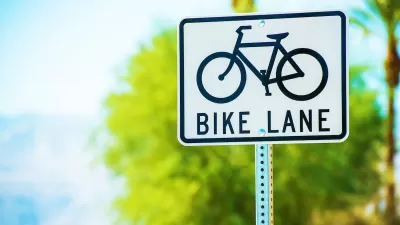A bit of bizarre news caught my attention recently and it got me thinking. It was about these roads in Japan that had been designed to play music as cars drive over them. The engineers behind this idea cut thousands of grooves into the roadway, separated them by certain specific intervals, and then drove their cars. What resulted is a weird humming melody that reverberates in the cars as they drive. The video linked below showing the roads and their songs is awesome, but so much more could be done.
A bit of bizarre news caught my attention recently and it got me thinking. It was about these roads in Japan that had been designed to play music as cars drive over them. The engineers behind this idea cut thousands of grooves into the roadway, separated them by certain specific intervals, and then drove their cars. What resulted is a weird humming melody that reverberates in the cars as they drive. The video linked below showing the roads and their songs is awesome, but so much more could be done.
These singing streets are an impressive novelty, but this idea could be far better utilized to improve road safety. Using this same sort of groove-cutting, sound-producing method, it seems like road engineers could make major progress in the reduction of traffic accidents.
Slicing grooves into new roads as they approach intersections and stop signs, for instance, would be a pretty simple way to keep drivers alert. Maybe I'm trivializing a major engineering feat, I don't really know. But it seems fairly reasonable to me, especially since most of the hard work has already been done by the innovative engineers at Japan's Hokkaido Industrial Research Institute. What I'm suggesting doesn't have to be an elaborate symphony on the road, just a simple ascending tone that would get higher and higher as a car approached an intersection. A stop sign can be overlooked or obstructed by trees, but a reverberating sound inside the cab of a vehicle is pretty hard to not notice. This would, in my mind, be a very effective way to reduce the rate of cars crashing into pedestrians, cyclists, trains and other cars. This method has already been utilized along the sides of highways across the country in the form of "rumble strips", jarring drivers with a loud noise if they slip too far into the shoulder.
What I'm suggesting doesn't have to be an elaborate symphony on the road, just a simple ascending tone that would get higher and higher as a car approached an intersection. A stop sign can be overlooked or obstructed by trees, but a reverberating sound inside the cab of a vehicle is pretty hard to not notice. This would, in my mind, be a very effective way to reduce the rate of cars crashing into pedestrians, cyclists, trains and other cars. This method has already been utilized along the sides of highways across the country in the form of "rumble strips", jarring drivers with a loud noise if they slip too far into the shoulder.
This proposed method would not only be effective, but cheap, too. That's right, fellow taxpayers, our public-good streets can be safer without costing us any additional cash. Say goodbye to flashing (and often confusing) pedestrian crossing signs and those energy-dependent blinking road bumps in the crosswalk. Imprinting grooves in the pavement means using less pavement, and you don't have to be an economist to understand those savings. This method is what environmental scientists refer to as a "passive" technique – meaning no energy is required to maintain operation. Just cut ‘em up and let the sounds work their life-saving magic. At least that's how I assume it would work.
Common "traffic calming" techniques like speed bumps and bulb-outs have been known to be effective, but they require additional construction and materials, amounting to additional costs to the taxpayer. Putting a little bit of effort into finding the right groove spacing to make the roads actually communicate with drivers would be an insignificant cost compared to that of the traditional bumps and bulges. And when weighed against the lives it would save, the cost would be negligible. We're probably not going to stop building roads in this country any time soon, so we might as well do whatever our stressed infrastructure budget will allow to make them as safe as possible.

Alabama: Trump Terminates Settlements for Black Communities Harmed By Raw Sewage
Trump deemed the landmark civil rights agreement “illegal DEI and environmental justice policy.”

Study: Maui’s Plan to Convert Vacation Rentals to Long-Term Housing Could Cause Nearly $1 Billion Economic Loss
The plan would reduce visitor accommodation by 25% resulting in 1,900 jobs lost.

Planetizen Federal Action Tracker
A weekly monitor of how Trump’s orders and actions are impacting planners and planning in America.

Waymo Gets Permission to Map SF’s Market Street
If allowed to operate on the traffic-restricted street, Waymo’s autonomous taxis would have a leg up over ride-hailing competitors — and counter the city’s efforts to grow bike and pedestrian on the thoroughfare.

Parklet Symposium Highlights the Success of Shared Spaces
Parklets got a boost during the Covid-19 pandemic, when the concept was translated to outdoor dining programs that offered restaurants a lifeline during the shutdown.

Federal Homelessness Agency Places Entire Staff on Leave
The U.S. Interagency Council on Homelessness is the only federal agency dedicated to preventing and ending homelessness.
Urban Design for Planners 1: Software Tools
This six-course series explores essential urban design concepts using open source software and equips planners with the tools they need to participate fully in the urban design process.
Planning for Universal Design
Learn the tools for implementing Universal Design in planning regulations.
Caltrans
Smith Gee Studio
Institute for Housing and Urban Development Studies (IHS)
City of Grandview
Harvard GSD Executive Education
Toledo-Lucas County Plan Commissions
Salt Lake City
NYU Wagner Graduate School of Public Service




























